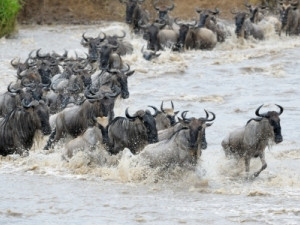
Deep VR, a South African cinematic virtual reality studio, is heading to Kenya to film the great wildlife migration using virtual reality.
The team leaves for the east African country in early August. Earning its place on the seven natural wonders of the world list, the migration sees three million wildebeest and nearly a million gazelle and zebra grit through a multi-country trek for food.
The content captured will be used to create a short form, narrated wildlife documentary called "Exodus: The Great Migration".
"Our goal is to forever change how people experience wildlife through technology," says Ulrico Grech-Cumbo, co-founder of Deep VR.
"The wildlife documentaries we all love and have grown up with have always been filmed from the relative safety of a vehicle and as such, kept viewers separated too. With the advent of virtual reality, the frame of your TV falls away and you're teleported to the thick of the action."
According to Grech-Cumbo, this type of shoot poses many technical challenges. He explains that to capture the stampede from the point of view of its constituents, an unmanned, 360-degree camera rig has to be placed inside it.
"We have developed a payload drone designed to pick our cameras up and drop them into the stampede," explains Telmo dos Reis, fellow co-founder of Deep VR.
Other innovations include stampede-proof "black box" cameras designed by the team, and remote triggers that increase the triggering distance from 5m to over 2km.
All of this development comes at a tremendous cost, the company says. Deep VR is self-funding the entire expedition and has just launched an Indiegogo campaign to further increase its production budget.
This crowdfunded budget will be used to build more cameras, maximising the capture of awe-inspiring shots.
So far, $1 460 has been raised.
According to Grech-Cumbo, virtual reality takes the guess work, and therefore risk, out of committing to travel.
"You can experience faraway places before ever actually going there. Various studies have shown that familiarity drives purchase confidence, and that's huge for tourism. Virtual reality dispels pre-conceived ideas about places," he notes.
"The convergence of our love for animals and our love for virtual reality and what it allows us to do is what inspired us. We can tell stories completely differently, in our case, from the point of view of animals. We've never been able to do that before. We've always filmed animals from a distance.
"We also want to future-proof our business and we certainly feel like our access to wildlife sets us apart from virtual reality companies around the world who are interested in telling stories."
Share